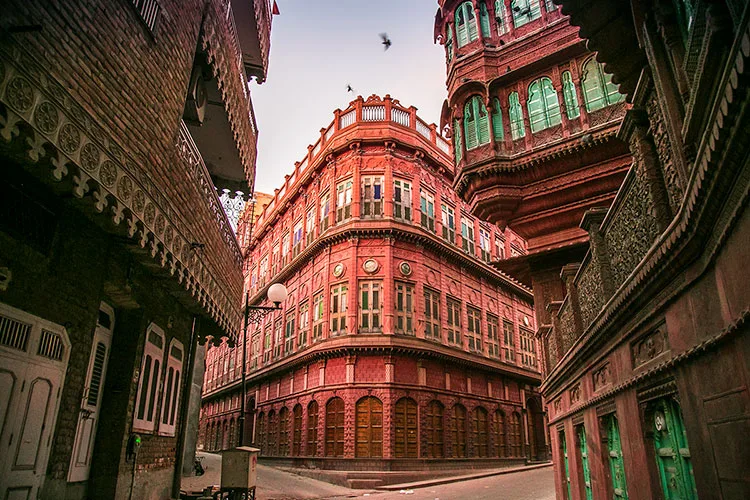Rampuria Haveli, Bikaner – The Pride of Shekhawati Architecture
Nestled in the historic city of Bikaner, Rampuria Haveli is a magnificent heritage mansion that reflects the opulence and grandeur of Rajasthan’s royal past. Often called the “Pride of Bikaner,” this haveli is not just a building, but a testament to the architectural brilliance and artistic heritage of the region. Built in the 19th century by the wealthy Rampuria family of merchants, the haveli is one of the finest examples of Shekhawati-style architecture, adorned with intricate carvings, jharokhas (overhanging enclosed balconies), latticework, and Mughal-Rajput fusion designs.
A Glimpse into the Past
The Rampuria Haveli was commissioned by Balujee Rampuria, a prominent merchant and banker, in the late 1800s during the reign of Maharaja Ganga Singh of Bikaner. He envisioned a residence that not only displayed his family’s wealth but also embodied their cultural values and artistic sensibilities. Over the years, the Rampuria family constructed a cluster of havelis, all located along a narrow street in the old city area of Bikaner, forming what is now popularly known as the Rampuria Havelis.
These havelis were built primarily from red sandstone sourced locally, giving them a rich reddish hue that glows in the sunlight. The craftsmanship involved in their construction is extraordinary, with detailed floral motifs, European-inspired facades, Mughal-style arches, and painted frescos that narrate stories from Indian mythology and daily life.
Architecture & Design
The architecture of Rampuria Haveli is a delightful blend of Rajputana, Mughal, and colonial European styles. The façade is heavily decorated with fine stone carvings, delicate brackets, and latticed windows. Each balcony, arch, and corridor tells a tale of regal elegance. The interiors of the haveli are equally stunning, featuring Italian tiles, stained glass windows, antique wooden furniture, and intricately designed ceilings.
One of the most remarkable features of the haveli is its beautiful jharokhas, which not only added to the aesthetics but also served practical purposes — allowing women to observe street activities without being seen, in accordance with the traditional purdah system.
The murals and frescos inside depict mythological themes, royal portraits, and scenes from everyday life, showcasing the fusion of Rajasthani and Victorian artistic influences. Many rooms still retain their original furnishings, giving visitors a peek into the lifestyle of wealthy merchant families of the 19th century.
Cultural Importance
Rampuria Haveli is more than just an architectural marvel; it is a symbol of Bikaner’s commercial and cultural heritage. During the 18th and 19th centuries, Bikaner emerged as a significant trading center on the silk and opium routes. Wealthy merchant families like the Rampurias played a pivotal role in boosting the economy and were known for their patronage of arts and crafts.
Today, although the haveli is still privately owned and not fully open to the public, its exteriors attract photographers, heritage enthusiasts, and travelers from around the world. Many Bollywood and regional films have used the location to capture the old-world charm of Rajasthan.
Visiting Rampuria Haveli
The haveli is located in Rampuria Lane, near the Bikaner Clock Tower and Kote Gate, in the old city. The best time to visit Bikaner is between October and March, when the weather is pleasant. Early mornings are ideal for photography as the soft light beautifully highlights the carvings and textures of the red sandstone structures.
While visitors can admire the exteriors at any time, access to the interiors is limited unless prior permission is obtained or a heritage tour is arranged through local tour operators.
Preservation & Tourism
Rampuria Haveli has become one of the most Instagrammable spots in Bikaner, yet it remains largely untouched by mass tourism. This has helped in preserving its authenticity and old-world aura. Efforts by local heritage societies and the Rajasthan tourism department are being made to protect and promote the site, ensuring that future generations can continue to admire its beauty.
